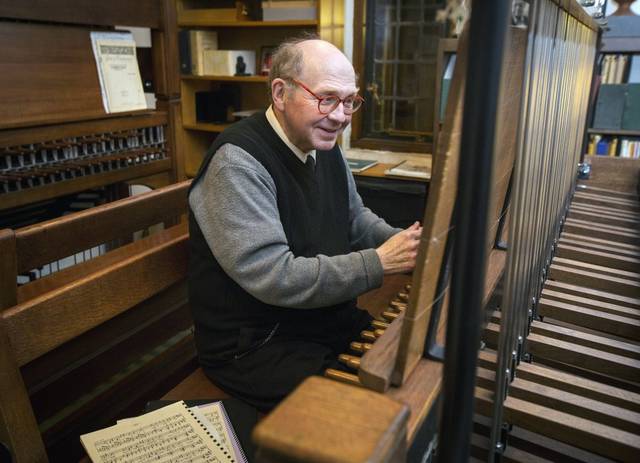DURHAM — When J. Samuel Hammond arrived as a freshman at Duke University in 1964, he knew nothing about the musical instrument that allowed a player to send melodies ringing across campus from the bells in the school’s iconic chapel tower. A demonstration from a fellow student introduced him to the 50-bell carillon that would become his life’s work as he played music that marked the end of the academic day for countless students.
Hammond, who retired as university carillonneur in 2018 after playing the bells at Duke Chapel for five decades, died Thursday at age 73 in Durham, the university said in a news release.
His music was heard each weekday by students leaving the day’s classes and, more recently, by alumni who could watch some of his performances online.
Toward the beginning of each weekday afternoon’s 15-minute performance, Hammond would pound out five strikes of the largest bell to mark five o’clock. Then, he typically moved on to hymns and other sometimes whimsical selections such as the movie themes from Star Trek or Star Wars, according to a university news article. He would often play songs to mark special occasions, such as the French anthem “La Marseillaise” on Bastille Day. When the basketball team played its archrival from the University of North Carolina, he played the Duke fight song.
“The carillon marks the rhythm of our days here at Duke, providing a shared experience that — sometimes subtly — connects us with one another, with traditions that stretch across centuries and continents, and even with God,” the Rev. Luke A. Powery, dean of Duke Chapel, said in 2018 when Hammond retired. “The person who has carried on that tradition at Duke for decades, faithfully and unassumingly, is Sam.”
The bells at the Gothic chapel are played by striking wooden keys by hand and pressing foot pedals, similar to a piano. The keys and pedals control cables that cause hammers to strike the bells, which range in size from 10 pounds (4.5 kg) to more than 5 tons (4.5 metric tons), the university article said.
It was physical work. A demonstration video posted by Duke at the time of his retirement shows Hammond shifting forward on his bench and putting his weight down to operate the largest bell when sounding the five o’clock chimes. As he commences the next tune, he leans in and, with subtle flowing movements, uses the side of his hand to strike the thin wooden keys that control smaller bells. The result is a buoyant melody emanating from the chapel’s 210-foot (64-meter) tower.
In addition to weekdays, Hammond also performed for Sunday chapel services and university events. The university said he played music on the bells an average of 300 times a year, estimating his performances exceeded 15,000. When he retired as carillonneur, two other musicians took over his duties.
“The sound of those bells is omnipresent in the life of our community, but also unassuming, a gentle accompaniment to the rhythm of our days,” Zebulon Highben, director of Chapel music, said in a statement Thursday. “This was Sam, too: omnipresent on campus, unassuming, deeply kind and thoughtful, humbly uninterested in the adulation he deserved.”
Hammond also earned two master’s degrees, in library science and theological studies, and worked for four decades as a music librarian at the school.
Hammond, who grew up in Americus, Georgia, enrolled at Duke in 1964 and learned how to play the carillon after a demonstration from a fellow student, Hammond recalled in 2018.
“When I was a freshman at Duke, I met the student carillonneur at the time, John Simpson, when we studied organ together,” Hammond said in the article about his retirement. “John invited me to see the carillon (of which I knew nothing), and in response to my intrigued interest in such an unusual instrument and in a potential opportunity of being of service to the university, kindly provided me beginning instruction and, ultimately, opportunity to play.”
He began playing regularly, according to the university article, and he was promoted to chapel carillonneur in 1968, the same year he graduated. In 1986, he was named university carillonneur, becoming the second person to hold that position.

